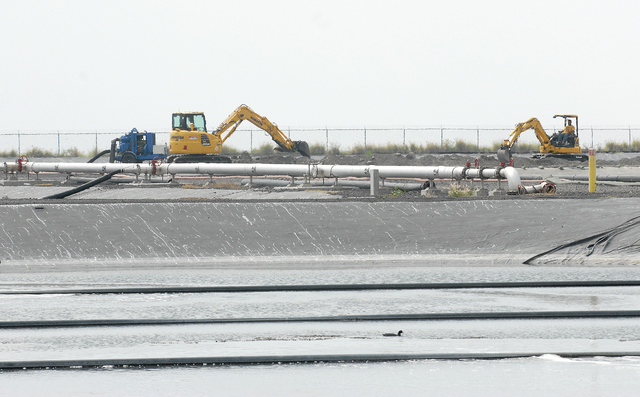KAILUA-KONA — Planned upgrades at the Kealakehe Wastewater Treatment Plant won’t only offer recycled water to irrigate growing Kona developments, they can also drastically reduce the discharge of nitrogen and phosphorus — two nutrients that can be harmful if they
KAILUA-KONA — Planned upgrades at the Kealakehe Wastewater Treatment Plant won’t only offer recycled water to irrigate growing Kona developments, they can also drastically reduce the discharge of nitrogen and phosphorus — two nutrients that can be harmful if they get into groundwater.
That’s according to a report presented Wednesday to the county’s Environmental Management Commission in Kailua-Kona.
“I’m very encouraged by these results; we’re gonna have a good system here,” said Craig Lekven, a managing engineer at Brown and Caldwell, who presented the report.
Upgrades associated with the project would officially allow the Kealakehe Wastewater Treatment Plant to produce “R-1” water, water considered suitable for irrigating food crops. That water wouldn’t connect with any drinking water systems.
To produce the R-1 water, the treatment plant must undergo several upgrades that will improve its ability to treat the water to be recycled. Lekven said planning estimates are currently about $48 million. The county, he said, has secured a state revolving fund loan to cover that cost, which will be refined as the design process goes on.
The planned upgrades include a rapid mix and flocculation tank, which will promote clumping of small particles into larger ones, as well as a filtration tank and ultraviolet disinfection tank.
Current flow at the treatment plant sits at about 1.7 million gallons of water per day, Lekven said, about a third of its total capacity.
Several sites have already been identified to be among the first to use the recycled R-1 in their irrigation systems, including Old Kona Airport, the Kohanaiki development and a buffer area around the treatment plant. Availability of the water is expected mid-2019, according to the director’s report to the commission.
Demand for recycled water from those initial users would take care of about half the treated water, said Lekven, and would fluctuate with rainfall throughout the year.
But, Lekven said, as development in Kona grows, so too would the rate of both wastewater treatment and demand for recycled water.
“We’re also trying to build a foundation for a recycled water program that can grow as the community grows,” he said.
The Liliuokalani Trust for example, he said, has large properties eyed for development, “and they need the recycled water.”
“So when those properties develop, there’ll be more wastewater produced and there’ll be a larger demand for recycled water,” said Lekven.
Although future development in the area will tighten the gap between treated water and demand, additional upgrades, such as the construction of wetlands and a soil aquifer treatment system, will provide further treatment so water can be released back into the ground.
Those wetlands will polish the treated water by removing nutrients and other impurities. An environmental impact statement preparation notice released Thursday indicates that the wetlands will consist of “appropriate Hawaiian native plant species.”
Lekven during his presentation anticipated that the wetlands could remove as much as 90 percent of the nitrogen from the water.
After going through the wetlands, a pipeline will carry the water to a soil aquifer treatment system, a federally recognized treatment method that allows water to percolate through the ground specially designed to additionally treat the water and control flow.
“This combination of natural processes will ensure that treated water is safely returned to the environment,” stated the notice.
Richard Bennett, the commission’s vice chairman, though noted that the rate of percolation and treatment are very dependent on soil type, questioning what sort of modeling had been done to ensure its efficacy.
Lekven said that after sampling various materials, they found that local soils “are notorious for absorbing phosphorus” with the two best being blue rock sand — often used in local construction — and the material locally available at the site of the plant.
Because of those results, he said they’re projecting more than 90 percent phosphorus removal for a 4-foot-deep system.
Lekven added that they will be seeking public comments on the proposed upgrades, saying a scoping meeting on the environmental impact statement preparation notice has been scheduled for April.



